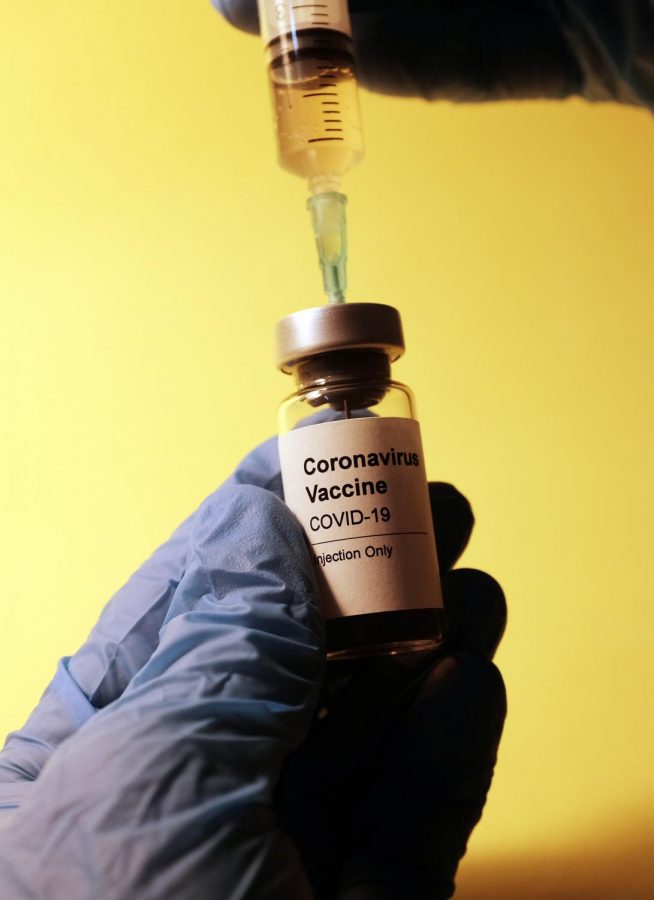Coronavirus Vaccine Progress
In these uncertain times, the distribution of the Coronavirus vaccine has begun.
Vaccine distribution in the United States of America has begun, but it will be many months before the majority of Americans are vaccinated, given the current trajectory of the distribution and production of the Pfizer and Moderna vaccines.
On Monday, December 14th, 2020, Sandra Lindsay, the director of critical care nursing at Long Island Jewish Medical Center, received the first Coronavirus vaccine in the United States outside of a clinical trial, beginning a new era in the fight against the pandemic. After the FDA authorized the emergency usage of the Pfizer-BioNTech Coronavirus vaccine on December 11th, 2020, many states in the U.S. rushed to begin distributing it to first responders and essential workers. The Department of Health and Human Services believes that approximately 2.9 million doses can be administered throughout the United States within the week of 12/14/2020. On Monday, December 14th, 2020, New York State received 170,000 doses of the vaccine and expects to receive 346,000 additional doses from Moderna in the near future.
The Pfizer vaccine was developed through a collaboration between Pfizer and BioNTech, and clinical trials suggest that it is nearly 95% effective on adults. It relies on injecting mRNA containing genetic information from the SARS-CoV-2 coronavirus into the body, which then fuse with cells and cause them to produce spike proteins. When the cell dies, the spike proteins are released into the bloodstream and are detected by antigen-presenting cells. This causes the body to trigger an immune response that promotes the production of antibodies which can latch on to the real virus and mark them for destruction. However, because mRNA is so fragile, it must be stored in ultra-low temperatures which requires special refrigeration equipment. While this poses a problem in distribution, Pfizer has collaborated with the government initiated Operation Warp Speed to create a “cold chain” in order to ensure the effectiveness of their vaccine. The vaccine is also stored in a Pfizer thermal shipper which uses dry ice to prevent it from perishing after delivery.
Since March 2020, President Trump had been insisting that the vaccine was just around the corner, and once it was ready, life would return normal. Finally, nine months later, we have begun this process, but the immediate future is not as bright as Trump has claimed. Not everyone will have the option to get vaccinated now; those who are the most vulnerable, at risk of exposure, and frontline workers are the highest priorities. In addition, the vaccine is not yet proven to be safe for everyone. Children under the age of sixteen and immunocompromised individuals are not authorized yet to receive this vaccination, as clinical trials on these groups have not yet been completed. There have been reports of an allergic reaction to the Pfizer vaccine in some people, although it is a very rare occurrence. The reality is that most Americans will likely have access to the vaccine by late spring / early summer of 2021.
Despite the good news, there is a lot of skepticism surrounding the vaccine. While it is not the majority of Americans, many have concerns over the vaccine approval process as vaccines typically take years to be developed and be licensed by the government. The Coronavirus vaccines developed by Pfizer and Moderna took mere months to be approved and the possible, but unknown long term effects of these vaccines is another factor that some feel concerned about.
The upside is that the confidence in the vaccine is increasing. According to a study by the Pew Research Center, the percentage of Americans who expressed their willingness to take the vaccine rose from 51% to 60% since September 2020.
The prospect of vaccination, however, is no reason to relax our guard against the Coronavirus pandemic. More than 372,000 people have died in the USA of COVID-19 as of January 10th, 2020, and more than 39,000 people have died in New York State alone. If we push back against quarantine regulations such as social distancing and masks before everyone is vaccinated, the rate of COVID-19 infection might increase even more, a potentially devastating shift.
On Monday, December 14th, 2020, Sandra Lindsay, the director of critical care nursing at Long Island Jewish Medical Center, received the first Coronavirus vaccine in the United States outside of a clinical trial, beginning a new era in the fight against the pandemic.
Samia Sultana is a News Editor for 'The Science Survey’ who believes that journalistic writing and photojournalism shed light into the hidden corners...

